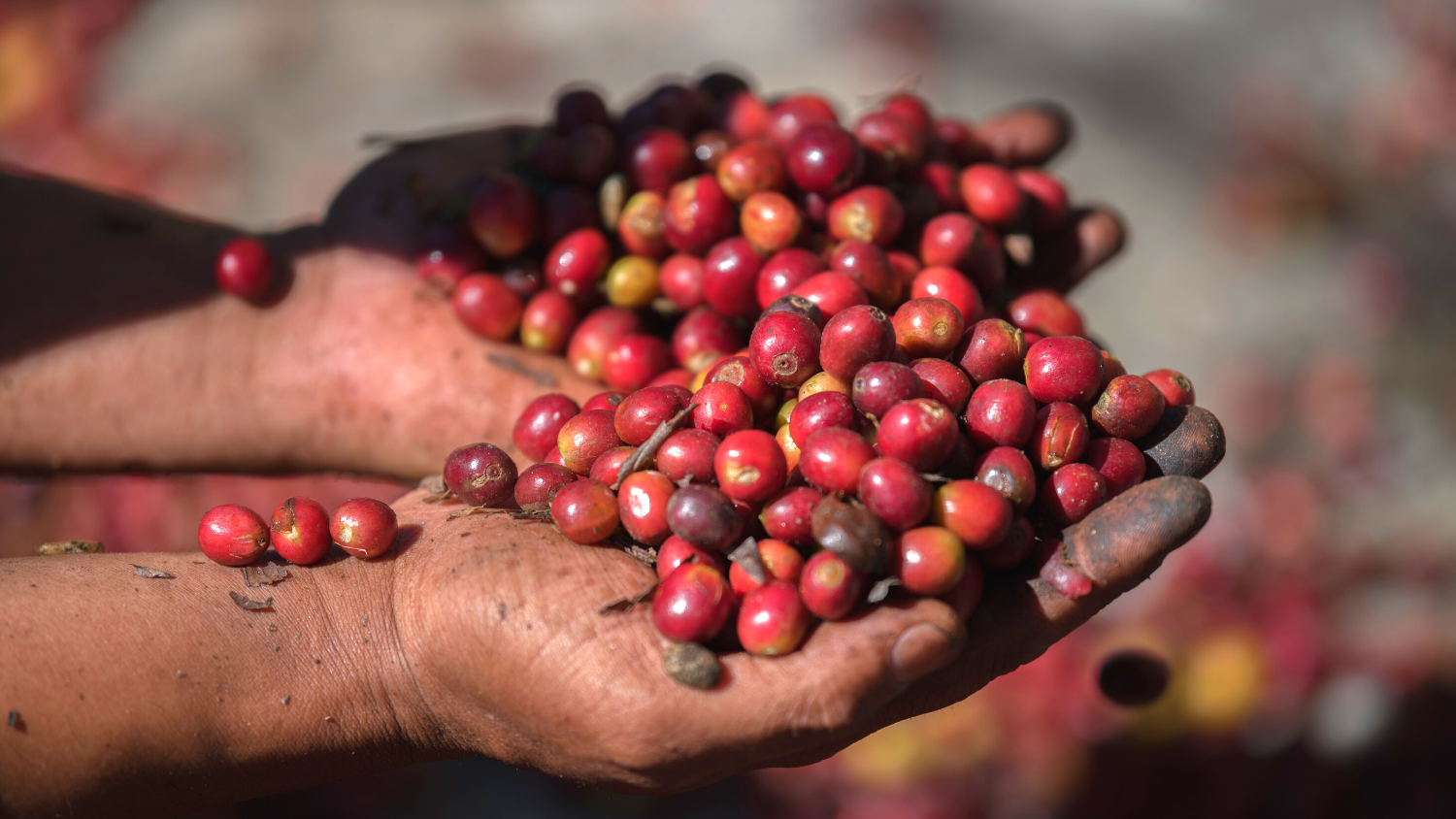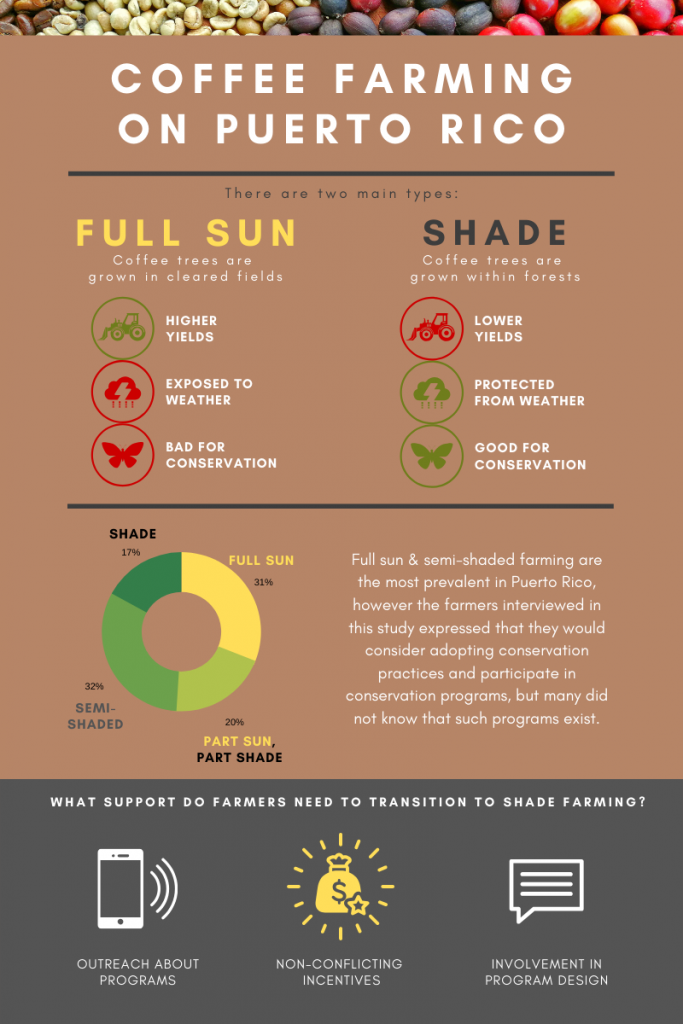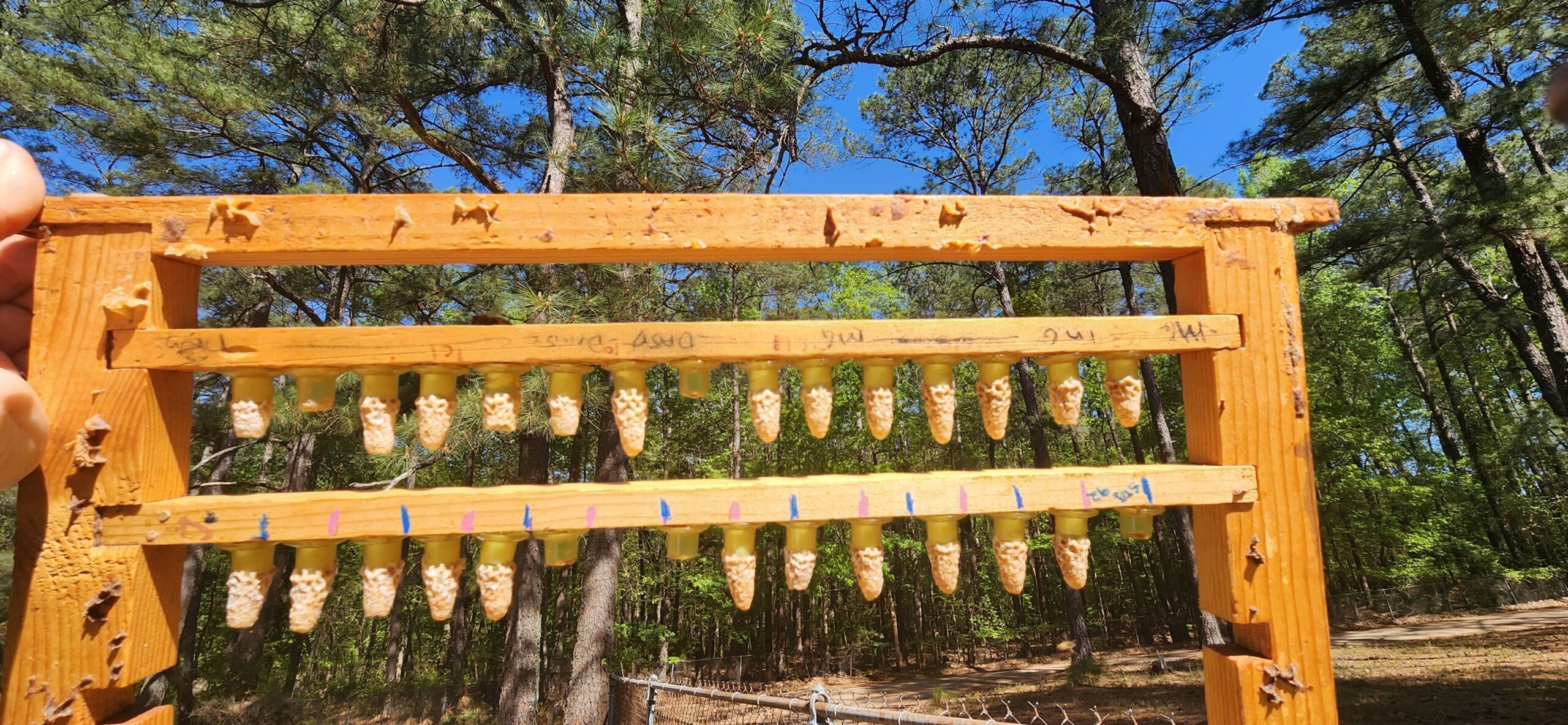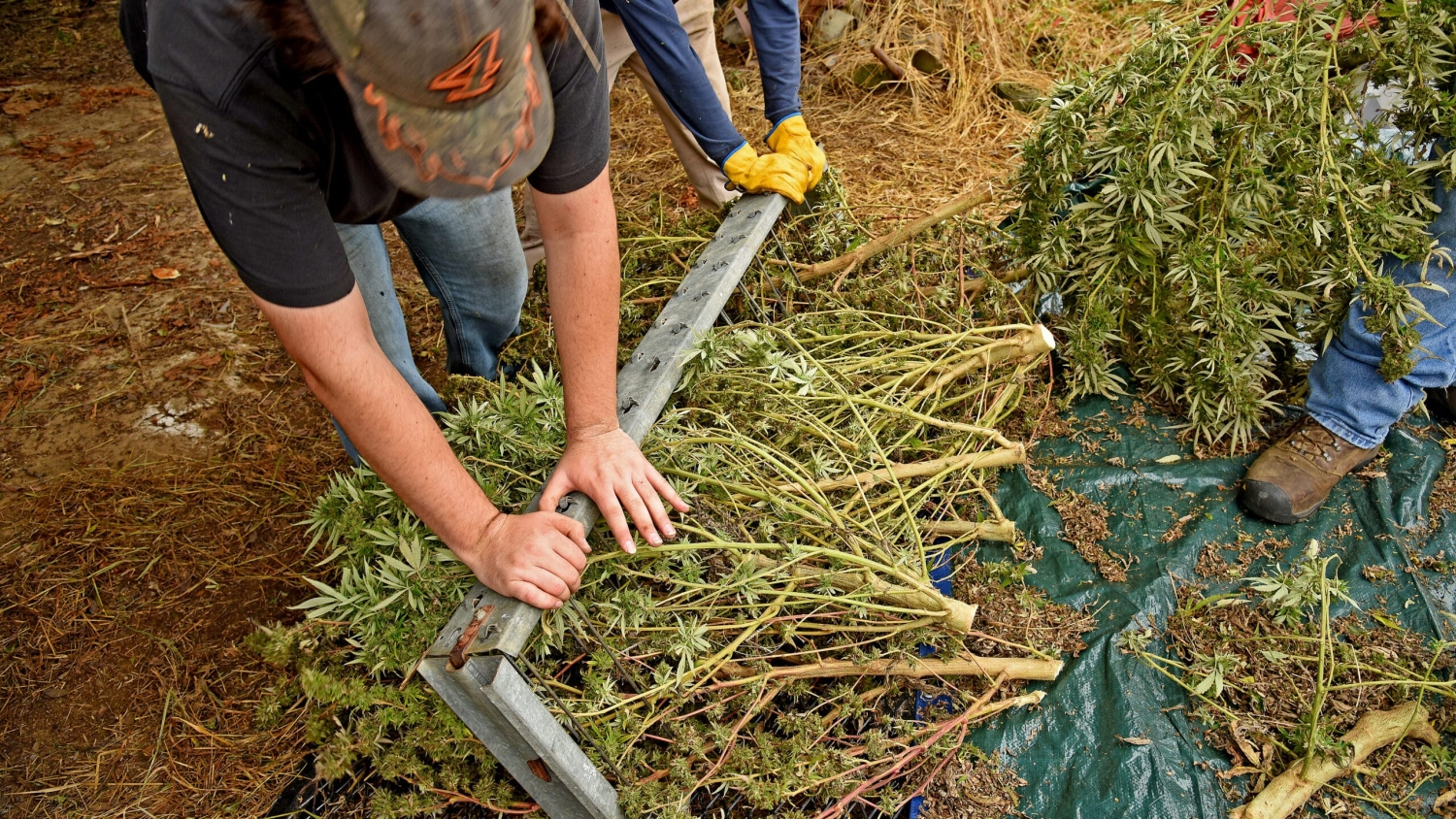How To Promote Shade Coffee Farming In Puerto Rico

In 2017, farmers were on track to harvest Puerto Rico’s largest coffee yield in 10 years, but 85% of their crops were destroyed that September by Hurricane Maria. Like many other communities in the United States, farming on Puerto Rico is a challenging balance between protecting crops from climate change, supporting conservation, and maximizing capital.

Coffee farmers are particularly vulnerable. A coffee tree needs to grow for 3-4 years before it can produce cherries (the pits are coffee beans) and are normally harvested only once per year. Coffee trees grown in cleared plots with full-sun have high yields and can be harvested more than once a year. However, full-sun crops are also fully exposed to the elements and clearing areas for coffee trees threatens delicate tropical biodiversity.
This has inspired a resurgence in traditional shade-farming techniques where farmers grow coffee trees within the protection of forest canopies. Shade farmers report that forest canopies shield their crops from extreme weather conditions, but shade crops produce less coffee than full-sun crops. Several organizations, including the USDA and U.S. Fish and Wildlife Service, have joined forces to fund incentives for current shade farmers and provide resources for full-sun farmers that want to convert to shade crops, yet participation in these programs is low. A recent collaborative study showed that only 33% of farmers surveyed participated.
So how does a coffee farmer decide what to do? A collaborative study from NC State University interviewed several farmers in the southwestern corner of Puerto Rico to find out.
“Currently, state and federal incentive programs favor conflicting farming practices,” says research author Tatiana M. Gladkikh. “This discrepancy undermines conservation efforts in the region and sends conflicting messages to the farmers. Some farmers were skeptical that transition to shade farming is feasible, while state agricultural programs favor conventional sun farming.”
Many of the interviewed farmers expressed that they are very willing to participate in incentive programs, but they didn’t know about them. The study calls for organizations to better communicate incentive programs by prioritizing outreach campaigns and to regularly check-in with farmers (see below infographic).
“Local, context-specific studies are essential to design effective conservation programs,” says Tatiana. “Programs that involve farmers in all stages, from design to implementation, might be more successful in recruiting and retaining participants. State and federal agricultural programs should reconcile their objectives to provide the most support to farmers.”
The study, “Factors that influence participation of Puerto Rican coffee farmers in conservation programs” was published in Conservation Science and Practice on January 8, 2020. The paper was authored by Tatiana M. Gladkikh from the University of Vermont and the Puerto Rican Center for Landscape Conservation, Jaime A. Collazo from NC State’s Department of Applied Ecology and North Carolina Cooperative Fish and Wildlife Research Unit, Alejandro Torres-Abreu and Angelica M. Reyes from the University of Puerto Rico and Puerto Rican Center for Landscape Conservation, and Marysol Molina from the Puerto Rican Center for Landscape Conservation.



